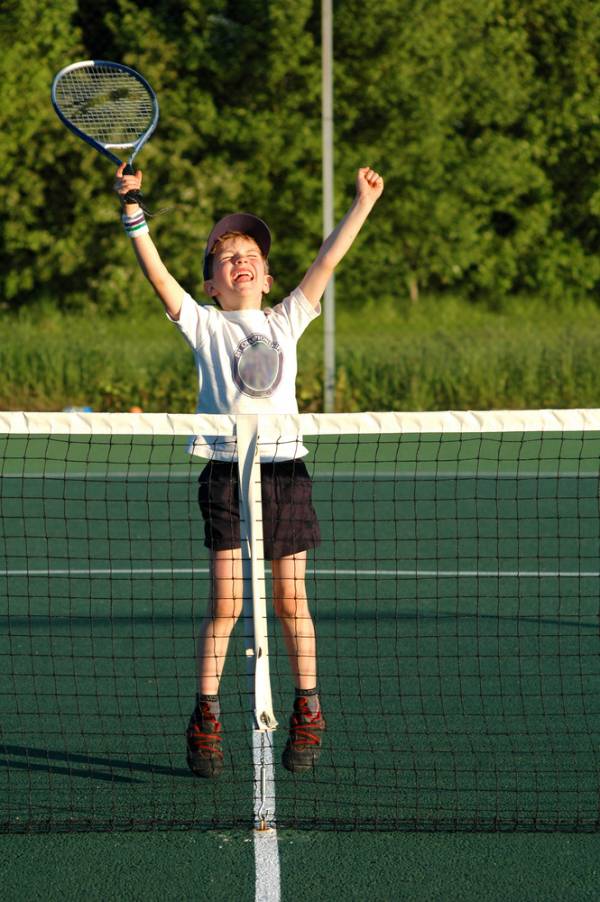It would be a gross understatement to say that childhood obesity has become a serious problem in America over the last several years. In fact, the Centers for Disease Control and Prevention (CDC) has stated childhood obesity is the fastest growing health crisis in the United States. Over the past thirty years, the rate of obesity has more than tripled for children aged 6 to 11 and more than doubled for adolescents aged 12 to 19. It’s been approximated that more than 33% of youths aged 2 to 19 (that’s more than 25 million kids) are overweight or obese.
It would be a gross understatement to say that childhood obesity has become a serious problem in America over the last several years. In fact, the Centers for Disease Control and Prevention (CDC) has stated childhood obesity is the fastest growing health crisis in the United States. Over the past thirty years, the rate of obesity has more than tripled for children aged 6 to 11 and more than doubled for adolescents aged 12 to 19. It’s been approximated that more than 33% of youths aged 2 to 19 (that’s more than 25 million kids) are overweight or obese.
Health Implications of Child Obesity
Being an overweight/obese child has an enormous impact on physical, mental, and emotional health along with social and overall development. Research has shown overweight/obese youths have a higher risk of chronic conditions such as asthma, hypertension (high blood pressure), high cholesterol, bone/joint problems, sleep apnea, and even certain types of cancer. Equally important is the emerging health concern of metabolic syndrome among American youths, which is a major risk factor for cardiovascular disease and type 2 diabetes.
In addition, kids who are overweight/obese have a poor self-image, low self-esteem, and a tendency to withdraw from others. They experience increased loneliness, sadness, nervousness, and depression. Youths can also be subjected to social stigmatization and discrimination, they can be teased and/or bullied by other kids, which can create social and emotional problems or intensify existing ones. Kids who gain weight are also more easily fatigued and tend to become less active, and a less active kid is subject to gaining more weight. Obviously this can lend itself to becoming a vicious cycle.
What Can We Do?
The recipe for success is no different for kids as it is for adults – implementing a sound health and fitness regimen. We as adults have a responsibility in helping keep today’s youth (and ourselves) healthy and fit so we need to step up and take charge. Here are some tips that may help:
#1: Lead By Example
Asking a child to do something you are unwilling to do yourself will usually yield poor results for both parties. “Practice what you preach” is the motto for encouraging kids to get moving and taking on a healthier direction. Adults need to take the reins and lead by example. It’s very simple. We do this by staying active, eating healthy and encouraging kids to do the same. It’s also important to educate kids on proper nutrition and safe exercise and activities so they are informed and can make intelligent choices for when adults are not around to guide them.
#2: Strength Training and Cardiovascular Training
Like all types of physical activity, strength training and aerobic training use calories. Strength training is unique, though, in that it can decrease body fat and increase muscle mass, thereby improving body composition and enhancing appearance and performance. Muscle tissue requires more calories to function than fat and as a result, kids with more muscle are more efficient at using calories. Aerobic training is also important since it can produce a sustained and significant use of calories and improves overall health and energy (both physically and mentally).
Keep in mind that kids don’t always need to implement a formal approach to training, as most adults tend to use. If an exercise program is too regimented, kids can and will lose interest quickly. Make training safe, fun, and in line with the child’s interests and ability to stay focused. And remember, a qualified instructor should be present to teach and monitor the child for his or her safety.
#3: Proper Nutrition
It’s typical that a parent will do the food shopping for the home so it’s imperative to make healthy, wholesome selections when food shopping. It’s also typical for the parent to be the one to take the kids through the drive-thru window, buy them sugary snacks at the store, and super size their meals. It’s obvious, then, that the home environment is the first place to set the foundation for proper nutrition.

Generally, schools, recreational events, and social activities don’t provide a great selection of healthy foods as they tend to lean more towards the sugary snacks, but with some proper planning, a child can have a very good day of eating healthy. Providing a child with easy-to-access foods can make all the difference in the world. Having cut up vegetables, fruit, nuts, and seeds available can fill in for great snacks while breakfast, lunch, and dinner can supply them with the majority of their body and mind building nutrients.
Inherently, kids will want some junk food and there’s nothing overtly wrong with a “cheat” here and there, but kids (like adults) left up to their own devices will eat as much junk food as they can, so limit the empty calories and feed the kids what they really need – healthy, fresh, wholesome foods.
#4: Encourage Kids to Be Kids and Let Them Play
Today’s youth is way too sedentary, with the technological era making it much too easy to just sit around and be occupied. Try to encourage kids to put down their indoor electronics and go for a walk, ride their bike, hit the playground, play recreational sports, and engage in all types of physical activities – especially with other friends. Kids tend to play more often and longer when they are with other kids so this is a great way to get them moving.
Some ways to assist with their activity can be as simple as having them do some calisthenics. Set up a small (yet safe) obstacle course for the kids to race each other through. Supply them with a large tug-of-war rope. Teach them some of the old-time favorite games such as running bases, capture the flag, tag, jump rope, etc. These games may appear silly at first glance but are great ways for kids to work on many skill sets such as their running, agility, conditioning, strength, competitive nature, and strategic thinking.
#5: Support P.E. and Organized Recreation
With more and more research pointing to activity increasing a child’s potential for learning, it behooves us to support and encourage organized physical activity in and out of the schools. Interestingly enough, statistics show that getting students to workout greatly improves their classroom performance.

One study found that 15 to 45 minutes of exercise before class reduced fidgeting among children by half and in another study that looked at three groups of students with different physical education routines, the group that exercised the most did the best on tests, even though they spent the least amount of time in class. For some reason (budgeting issues more than likely), P.E. classes and pre/post school activities are being cut off, viewed as being unimportant to the learning of a child while in reality physical activity is probably one of the most important aspects to the learning ability of a child.
Bottom Line
The vast majority of overweight kids ultimately become overweight or obese adults. This may never be eradicated, but we can certainly make an effort to help control this current epidemic using some of the ideas recommended above.
Photos courtesy of Shutterstock.






